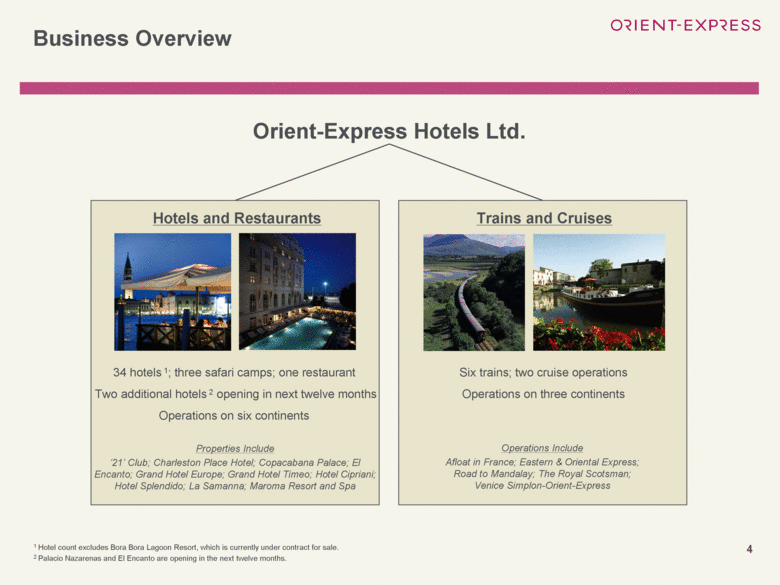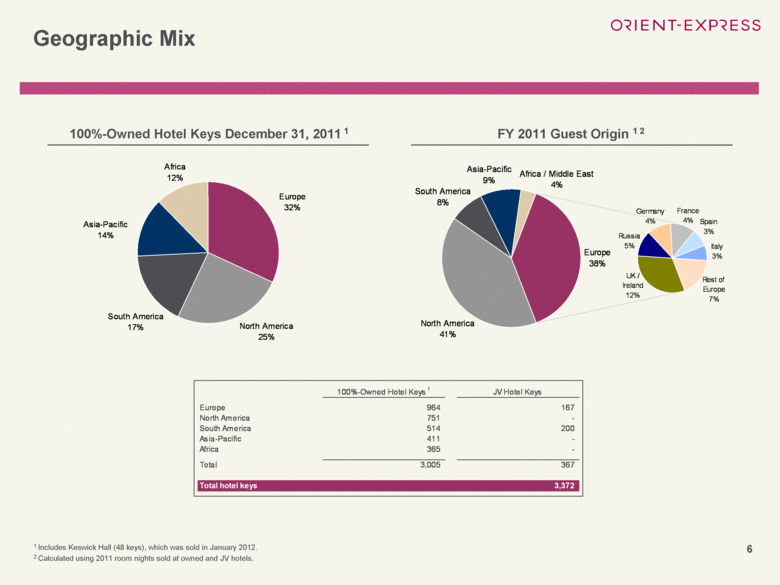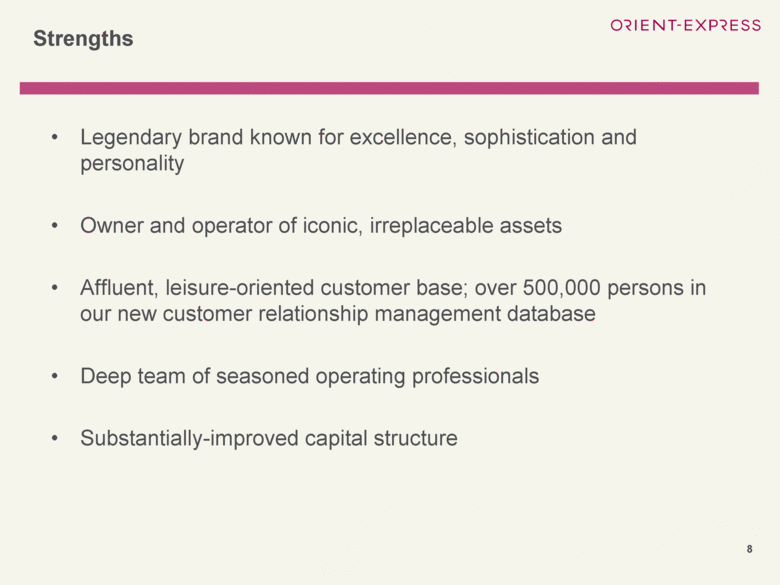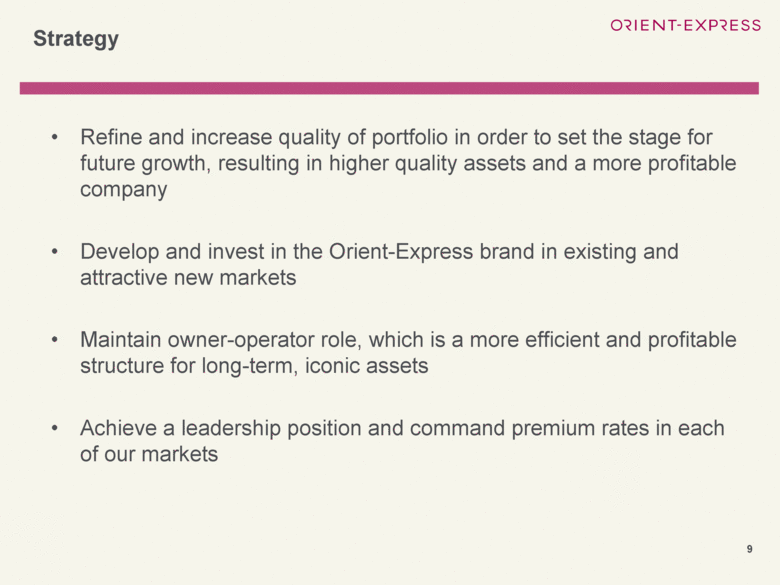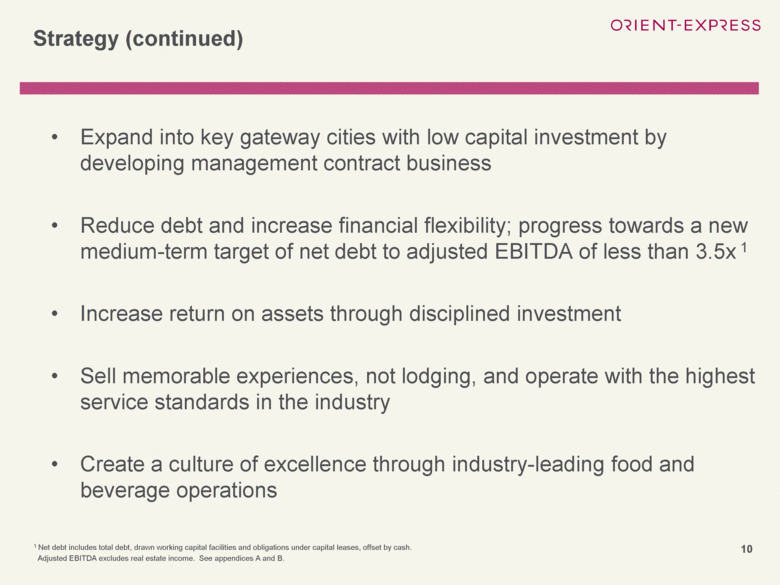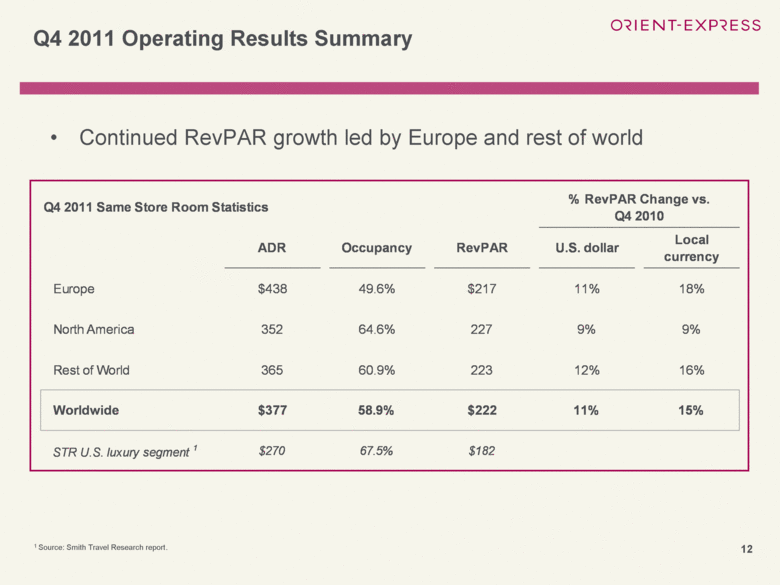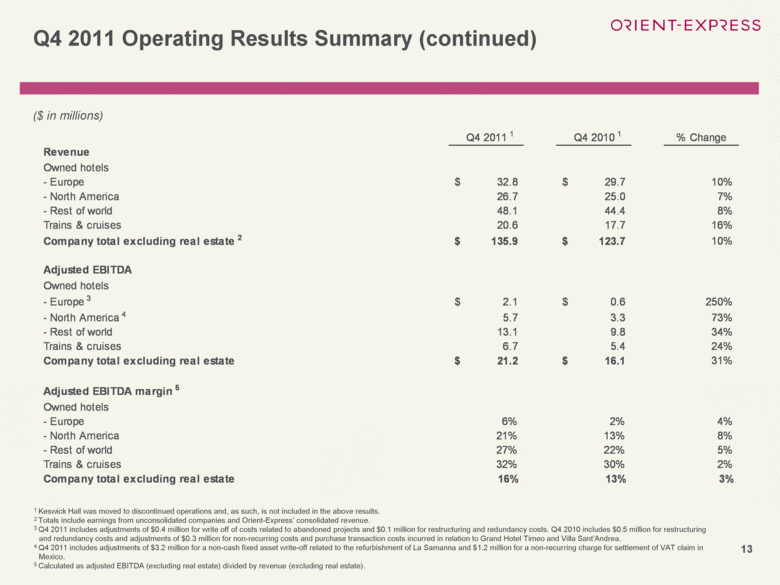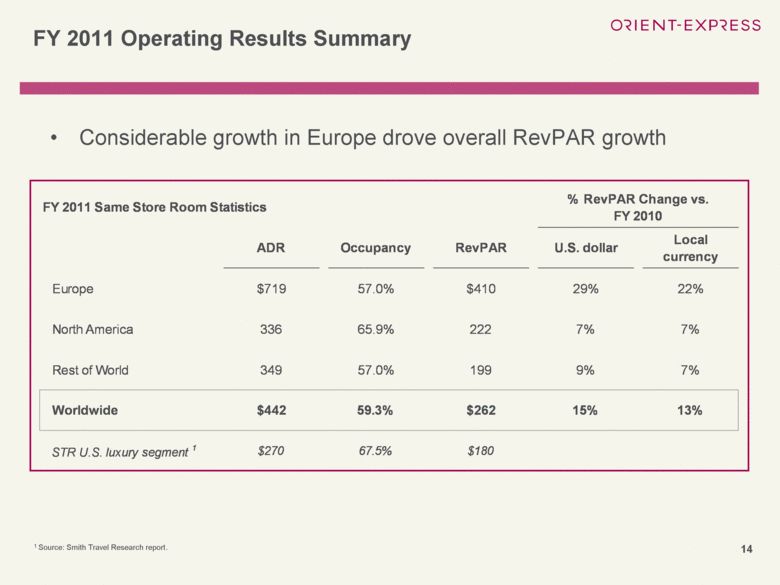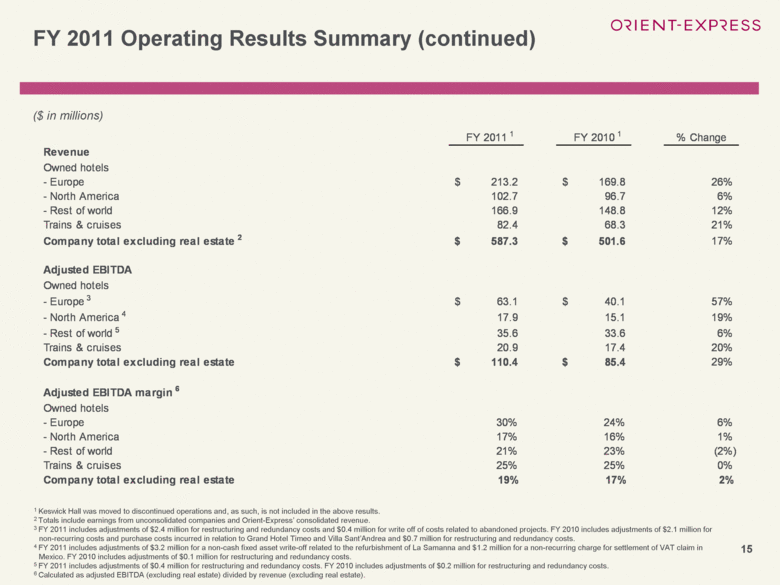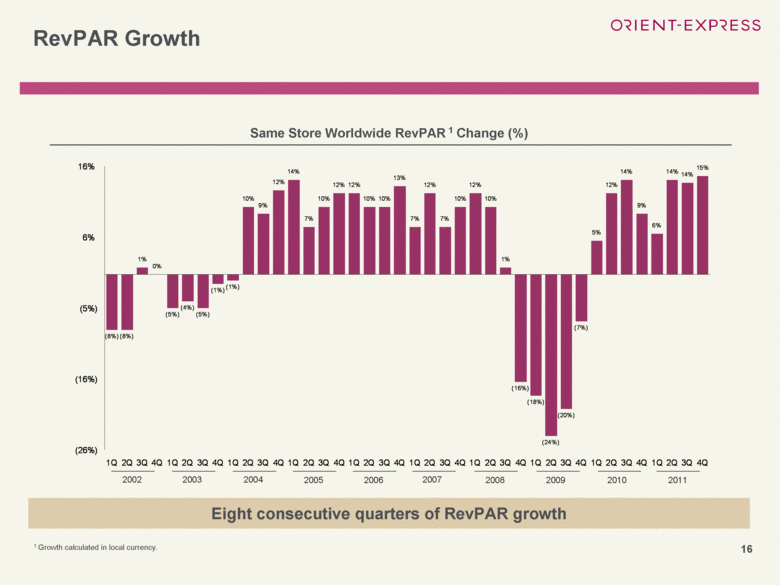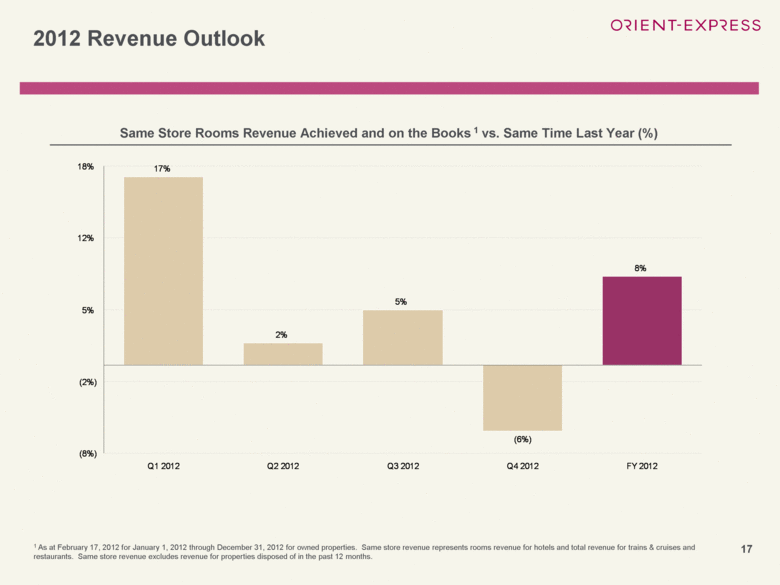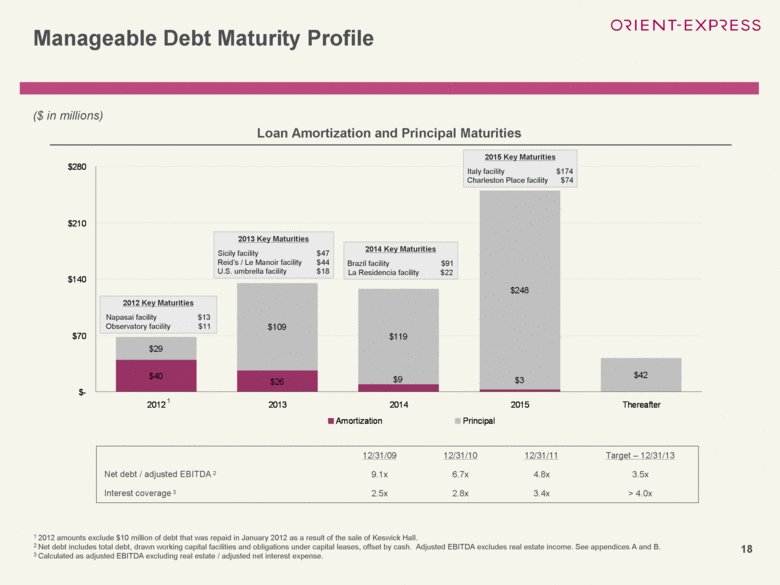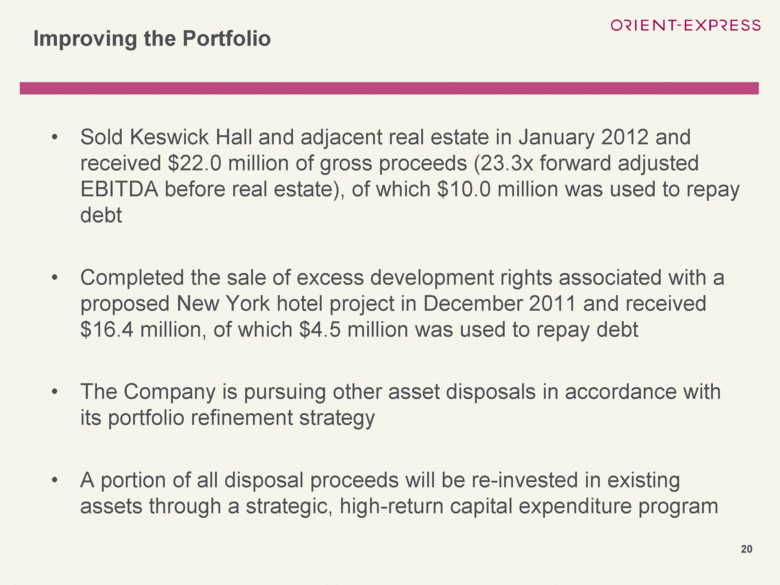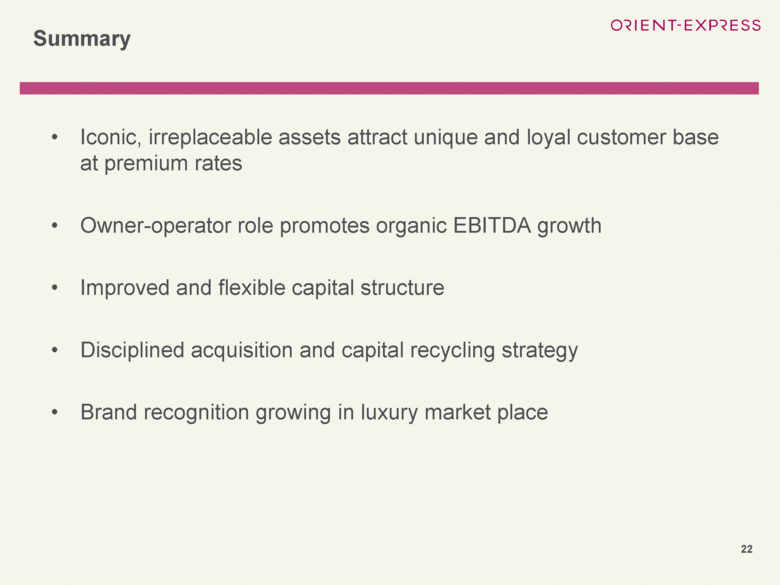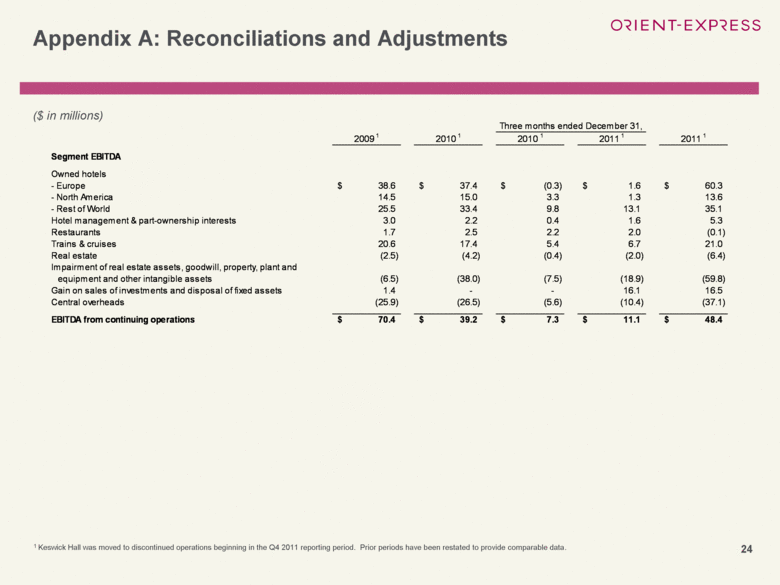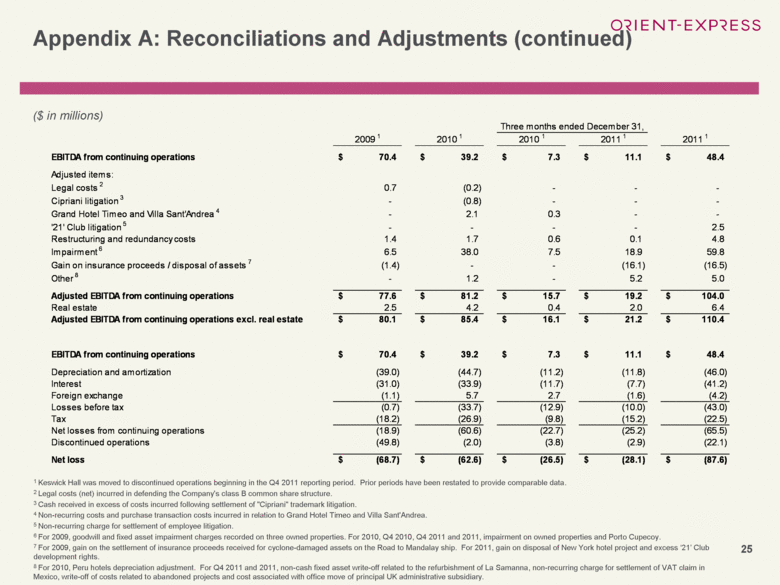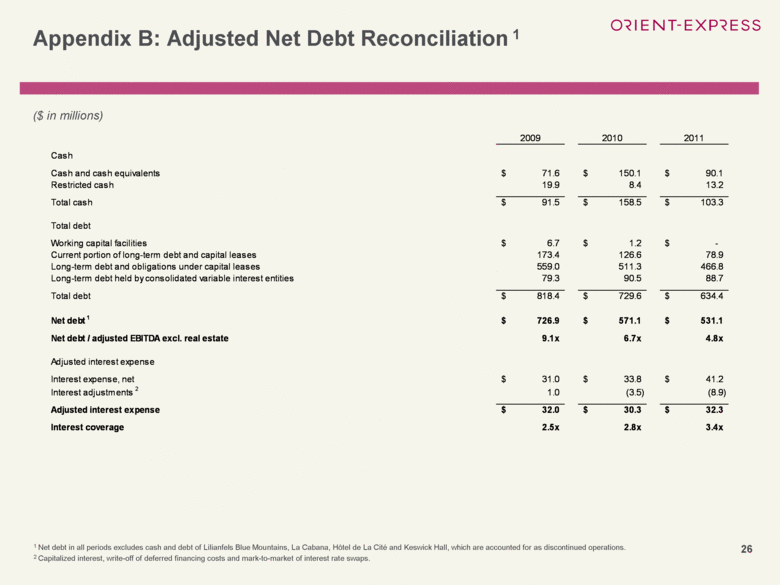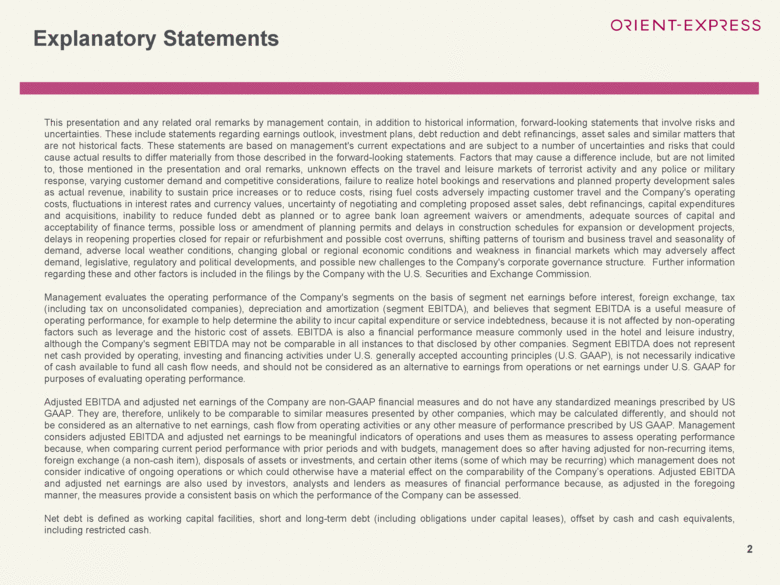
| This presentation and any related oral remarks by management contain, in addition to historical information, forward-looking statements that involve risks and uncertainties. These include statements regarding earnings outlook, investment plans, debt reduction and debt refinancings, asset sales and similar matters that are not historical facts. These statements are based on management's current expectations and are subject to a number of uncertainties and risks that could cause actual results to differ materially from those described in the forward-looking statements. Factors that may cause a difference include, but are not limited to, those mentioned in the presentation and oral remarks, unknown effects on the travel and leisure markets of terrorist activity and any police or military response, varying customer demand and competitive considerations, failure to realize hotel bookings and reservations and planned property development sales as actual revenue, inability to sustain price increases or to reduce costs, rising fuel costs adversely impacting customer travel and the Company's operating costs, fluctuations in interest rates and currency values, uncertainty of negotiating and completing proposed asset sales, debt refinancings, capital expenditures and acquisitions, inability to reduce funded debt as planned or to agree bank loan agreement waivers or amendments, adequate sources of capital and acceptability of finance terms, possible loss or amendment of planning permits and delays in construction schedules for expansion or development projects, delays in reopening properties closed for repair or refurbishment and possible cost overruns, shifting patterns of tourism and business travel and seasonality of demand, adverse local weather conditions, changing global or regional economic conditions and weakness in financial markets which may adversely affect demand, legislative, regulatory and political developments, and possible new challenges to the Company's corporate governance structure. Further information regarding these and other factors is included in the filings by the Company with the U.S. Securities and Exchange Commission. Management evaluates the operating performance of the Company's segments on the basis of segment net earnings before interest, foreign exchange, tax (including tax on unconsolidated companies), depreciation and amortization (segment EBITDA), and believes that segment EBITDA is a useful measure of operating performance, for example to help determine the ability to incur capital expenditure or service indebtedness, because it is not affected by non-operating factors such as leverage and the historic cost of assets. EBITDA is also a financial performance measure commonly used in the hotel and leisure industry, although the Company's segment EBITDA may not be comparable in all instances to that disclosed by other companies. Segment EBITDA does not represent net cash provided by operating, investing and financing activities under U.S. generally accepted accounting principles (U.S. GAAP), is not necessarily indicative of cash available to fund all cash flow needs, and should not be considered as an alternative to earnings from operations or net earnings under U.S. GAAP for purposes of evaluating operating performance. Adjusted EBITDA and adjusted net earnings of the Company are non-GAAP financial measures and do not have any standardized meanings prescribed by US GAAP. They are, therefore, unlikely to be comparable to similar measures presented by other companies, which may be calculated differently, and should not be considered as an alternative to net earnings, cash flow from operating activities or any other measure of performance prescribed by US GAAP. Management considers adjusted EBITDA and adjusted net earnings to be meaningful indicators of operations and uses them as measures to assess operating performance because, when comparing current period performance with prior periods and with budgets, management does so after having adjusted for non-recurring items, foreign exchange (a non-cash item), disposals of assets or investments, and certain other items (some of which may be recurring) which management does not consider indicative of ongoing operations or which could otherwise have a material effect on the comparability of the Company’s operations. Adjusted EBITDA and adjusted net earnings are also used by investors, analysts and lenders as measures of financial performance because, as adjusted in the foregoing manner, the measures provide a consistent basis on which the performance of the Company can be assessed. Net debt is defined as working capital facilities, short and long-term debt (including obligations under capital leases), offset by cash and cash equivalents, including restricted cash. Explanatory Statements |



